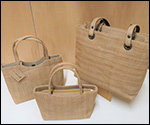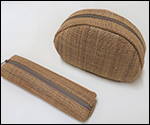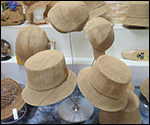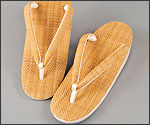Uetsu Shinafu Fabric(Tsuruoka City)
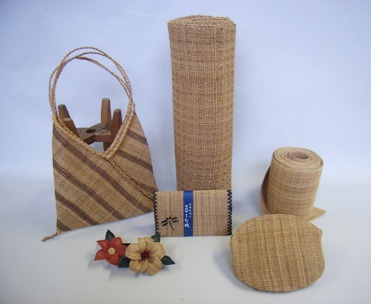
History/Outline
Uetsu Shinafu fabric, made from the bark of trees, is considered to be one of the three ancient fabrics of Japan.
Shina-ori fabric has long been woven in almost every household in the Sekikawa area south of Tsuruoka City (located in the northwest of Yamagata with a population of 140,000). Located in the snowy mountainous region of Atsumi,
Sekikawa is bordered on the south by Niigata Prefecture.
Although its origin is not known, Shina-ori fabric is known as one of Japan's three ancient fabrics, together with Basho-nuno in Okinawa Prefecture (the southernmost prefecture in Japan), and Kuzu-nuno in Shizuoka Prefecture (located at the center of Japan).
Since 1985, production has flourished with the assistance of the Shina-ori Center, which was built in the area with concerted efforts of local residents. In 2005, it was designated as a National Traditional Craftwork together with Shina-nuno of Sanpoku town in Niigata Prefecture (currently a part of Murakami City).
Although its origin is not known, Shina-ori fabric is known as one of Japan's three ancient fabrics, together with Basho-nuno in Okinawa Prefecture (the southernmost prefecture in Japan), and Kuzu-nuno in Shizuoka Prefecture (located at the center of Japan).
Since 1985, production has flourished with the assistance of the Shina-ori Center, which was built in the area with concerted efforts of local residents. In 2005, it was designated as a National Traditional Craftwork together with Shina-nuno of Sanpoku town in Niigata Prefecture (currently a part of Murakami City).
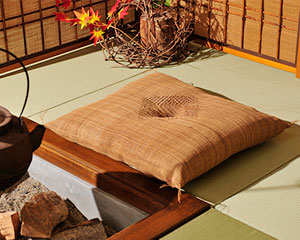
Techniques/Characteristics
Uetsu Shina-fu is carefully made over a period of one year.
Shina-ori production techniques have been preserved in Sekikawa district, keeping the ancient methods of cutting and peeling the bark of Shina trees (the original material for the Shina-ori) during the rainy season (June to
July).
From summer through autumn people collect fiber from the trees, then when snow falls they spin the thread and weave Shina-nuno fabric until spring.
Modern Shina-nuno fabric production is divided into two processes: the cutting of trees and production of the thread is done by individual households within the area, followed by weaving and final production at the Shina-ori Center.
The fabric is water-resistant and extremely durable, and is also cool to wear, with an elegant texture.
From summer through autumn people collect fiber from the trees, then when snow falls they spin the thread and weave Shina-nuno fabric until spring.
Modern Shina-nuno fabric production is divided into two processes: the cutting of trees and production of the thread is done by individual households within the area, followed by weaving and final production at the Shina-ori Center.
The fabric is water-resistant and extremely durable, and is also cool to wear, with an elegant texture.
Main Products
●Bags ●Hats ●Small Items
